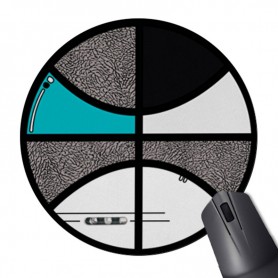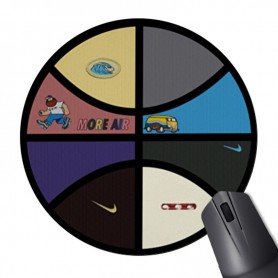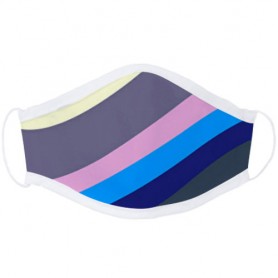5/5
03.11.2024
Watch YouTube Short
Balanset-1A: The Ultimate Rotor Balancing Device
In the world of machinery, ensuring the smooth and efficient operation of rotating components is paramount. One of the most effective ways to achieve this is through dynamic balancing. So, how is dynamic balancing of turbines performed? Let’s explore this essential process and how the Balanset-1A device revolutionizes rotor balancing.
Introducing Balanset-1A
The Balanset-1A is a sophisticated two-channel device designed for balancing and vibration analysis. This versatile instrument is suitable for a wide range of rotors, including crushers, fans, mulchers, choppers on combine harvesters, shafts, centrifuges, and notably, turbines. With its advanced features, the Balanset-1A provides an unparalleled approach to dynamic balancing.
Key Features of Balanset-1A
Vibrometer Mode
Tachometer: Accurately measures rotational speed (RPM).
Phase: Determines the phase angle of vibration signals for precise analysis.
1x Vibration: Measures and analyzes the fundamental frequency component.
FFT Spectrum: Provides a detailed view of the frequency spectrum of vibration signals.
Overall Vibration: Measures and monitors overall vibration levels.
Measurement Log: Stores measurement data for further analysis.
Balancing Mode
Single Plane Balancing: Balances rotors in a single plane to reduce vibration.
Two Plane Balancing: Balances rotors in two planes for dynamic balancing.
Polar Graph: Visualizes unbalance in a polar graph for accurate weight placement.
Restore Last Session: Allows resuming previous balancing sessions for convenience.
Tolerance Calculator (ISO 1940): Calculates acceptable balancing tolerance according to ISO 1940 standards.
Grinding Wheel Balancing: Circular groove for effective grinding wheel balancing.
Charts and Additional Capabilities
Overall Charts: Visual representation of overall vibration.
1x Charts: Displays vibration patterns of the fundamental frequency component.
Harmonic Charts: Shows the impact of harmonic frequencies.
Spectrum Charts: Graphical representation of the frequency spectrum for in-depth analysis.
Archive: Store and access previous balancing sessions.
Reports: Generate detailed reports of balancing results.
How Dynamic Balancing is Performed
Dynamic balancing involves several critical steps to ensure that the rotor is correctly balanced. Before initiating the balancing process, it is crucial to ensure that the machinery is technically sound and securely mounted. If necessary, repairs should be made, and any contaminants should be cleaned off the rotor.
Prior to measurements, vibration sensors must be strategically placed according to recommended guidelines. It is advisable to conduct preliminary measurements in vibrometer mode to assess the overall condition of the rotor.
If the total vibration levels (V1s or V2s) closely match the rotational components (V1o or V2o), it indicates that rotor unbalance is the primary contributor to vibration. Conversely, if total vibration significantly exceeds the rotational component, further inspection of the machinery is warranted.
Process Steps for Balancing with Balanset-1A
1. Equipment Preparation
Install vibration sensors perpendicular to the rotor's axis, secure the laser tachometer, and connect the device to a laptop via USB. Launch the Balanset software and select the two-plane balancing mode.
2. Initial Vibration Measurement
Weigh the test load and record its weight and radius. Start the rotor to measure the initial vibration levels, determining amplitude and phase of the initial unbalance.
3. Balancing in the First Plane
Place the test load in the first balancing plane and restart the rotor. A change of at least 20% in amplitude or phase indicates partial correction of unbalance.
4. Balancing in the Second Plane
Move the test load to the second balancing plane and repeat the measurement. This data will help the program determine the exact position and weight of corrective loads.
5. Correction of Unbalance
Based on the data, the Balanset software will recommend corrective weights and their installation angles. Install these weights accordingly and start the rotor for final verification.
6. Verification and Completion
Run the rotor for a final check. If vibration levels are acceptable, the process is complete. If further adjustments are needed, the program will guide you on additional weight placements.
Conclusion
The Balanset-1A is not just a tool; it is an essential component in the maintenance of machinery that relies on dynamic balancing. With its advanced features and user-friendly interface, it answers the question, how is dynamic balancing of turbines performed? By following the outlined steps and utilizing the Balanset-1A, operators can ensure the longevity and efficiency of their machinery, reducing downtime and enhancing productivity.
With a price tag of €1751, investing in the Balanset-1A is a step towards ensuring optimal performance of your rotors and machinery.
Contact Information:
For more information about our Balanset balancing devices and other products, please visit our website: https://vibromera.eu.
Subscribe to our YouTube channel, where you will find instructional videos and examples of completed work: https://www.youtube.com/@vibromera.
Stay updated with our latest news and promotions on Instagram, where we also showcase examples of our work: https://www.instagram.com/vibromera_ou/.
Buy Balanset-1A on Amazon
Balanset-1A OEM on Facebook Marketplace






















